 Return to
Return toAviation Answer-Man
Gateway
 Return to
Return to
Aviation Answer-Man
Gateway
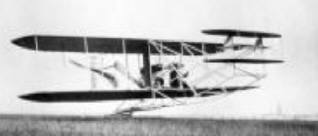 Return to
Return to

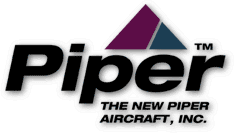 Piper Aircraft
Piper Aircraft
~~~
a quick history
Copyright 2000-2004, 2012, 2014, 2021, 2023
by R.Harris
All Rights Reserved
A modified version of this article appeared in a series
in the genreal aviation magazine InFlight USA, 2000-2001
[NOTE: If using a nomrally configured web browser,
which allows pop-ups,
hold cursor still, over pictures, for their captions.]
 Beginnnings
Beginnnings
Piper Aircraft Corporation started in 1927, as the Taylor Brothers Aircraft Company, in Rochester, New York. It was the product of two enterprising brothers -- Gordon and C.Gilbert Taylor (shown at right, Gordon to the left of Gilbert) -- who (with the help of their mechanically inclined British-American immigrant father) had developed the Taylor Chummy (below,left), a compact, simple, 2-seat (side-by-side), high-winged taildragger.
 This was a time of biplanes (airplanes with two wings, one above the other), rather than monoplanes (airplanes with just one wing). Biplanes, like the trusted deHavilland DH-4 (below left), had long been valued for the lifting power of their extra wing area, and for the strength created by the "box-truss" arrangement of the airplane's frame ("airframe") created by the network of braces and wires that held the upper and lower wing assemblies together. Monoplanes -- though cleaner, simpler and more efficient -- were generally thought of as flimsy, and regarded with suspicion.
This was a time of biplanes (airplanes with two wings, one above the other), rather than monoplanes (airplanes with just one wing). Biplanes, like the trusted deHavilland DH-4 (below left), had long been valued for the lifting power of their extra wing area, and for the strength created by the "box-truss" arrangement of the airplane's frame ("airframe") created by the network of braces and wires that held the upper and lower wing assemblies together. Monoplanes -- though cleaner, simpler and more efficient -- were generally thought of as flimsy, and regarded with suspicion.
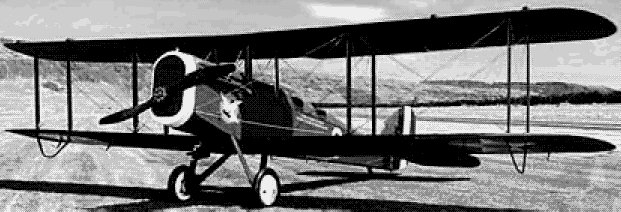
 But in April of 1927, all that began to change when a Ryan monoplane, the Spirit of St.Louis (right), piloted by Charles Lindbergh, succeeded in making the first solo non-stop crossing of an ocean -- flying from New York to Paris across the Atlantic. One of the contributing factors in Lindbergh's success was the aerodyamically "clean" shape of his monoplane. Without the drag-producing, traditional biplane maze of wing struts and wires, his monoplane was able to slice through the air more easily, going faster and farther on a gallon of fuel than a typical biplane could. Suddenly, monoplanes became credible and very attractive.
But in April of 1927, all that began to change when a Ryan monoplane, the Spirit of St.Louis (right), piloted by Charles Lindbergh, succeeded in making the first solo non-stop crossing of an ocean -- flying from New York to Paris across the Atlantic. One of the contributing factors in Lindbergh's success was the aerodyamically "clean" shape of his monoplane. Without the drag-producing, traditional biplane maze of wing struts and wires, his monoplane was able to slice through the air more easily, going faster and farther on a gallon of fuel than a typical biplane could. Suddenly, monoplanes became credible and very attractive.
Among the aviation pioneers who saw value in monoplanes was C. Gilbert Taylor. His original Chummy, in fact, looked very much like a miniature replica of the Spirit of St. Louis. Early development looked promising, but a crash killed Gordon. Gilbert (reportedly distraught over the loss of his brother) abandoned the Rochester airfield, and moved his business to Bradford, Pennsylvania. In a time when Pennsylvania was a dominant source of crude oil for America's industrial and transportation machines, Bradford was doing well, and some of its people had spare money to invest. Gilbert Taylor re-organized and revived his company in Bradford, financing it with local money.
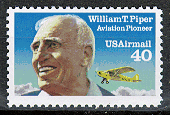
Local investors designated one of their own -- oilman William T. Piper, Sr. (right) -- as the company's Treasurer. Piper and Taylor would begin a long, tiring disagreement over which was better -- the expensive, powerful, custom-crafted plane that Taylor envisioned, or the cheap, simple, mass-produced "everyman's airplane" -- a "Ford Model A of the air" -- that Bill Piper longed to produce.
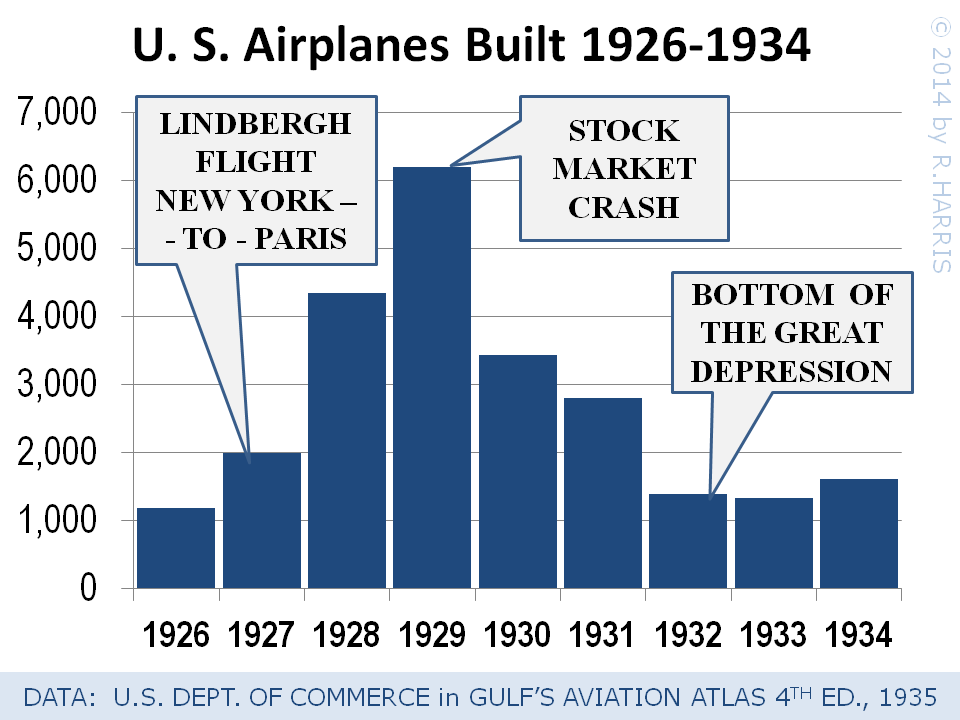 As Taylor sought to rebuild his company, the stock market crashed, and the Great Depression marched in, stomping on everyone's ambitions.
As Taylor sought to rebuild his company, the stock market crashed, and the Great Depression marched in, stomping on everyone's ambitions.
The Chummy's 90-horsepower radial engine was too costly, and the plane had to be redesigned as a streamlined, tandem-seating plane, powered by a dinky 30-hp "Tiger Kitten" engine. Though the engine was not kept for long, it gave rise to the airplane's name, "the Cub." Called the Cub E-2, the plane stumbled onto the Depression market in about 1931. But it was too late. Mired in debt, Taylor declared bankruptcy, and Piper bought the company's remaining assets for $761.
The J-3 Cub Takes Off
 Though officially renaming Taylor as company president, Piper took over the design when Taylor fell ill. Piper allowed a young, volunteer "aeronautical engineer," Walter Jamoneau, to tinker with Taylor's design. Jamoneau created a sensation with his refined version of the E-2: the streamlined 35/40-hp J-2 Cub, followed by an improved 50-hp J-3 Cub -- a two-seat (tandem), cloth-covered, high-wing, taildragger.
Though officially renaming Taylor as company president, Piper took over the design when Taylor fell ill. Piper allowed a young, volunteer "aeronautical engineer," Walter Jamoneau, to tinker with Taylor's design. Jamoneau created a sensation with his refined version of the E-2: the streamlined 35/40-hp J-2 Cub, followed by an improved 50-hp J-3 Cub -- a two-seat (tandem), cloth-covered, high-wing, taildragger.
At a time when the public could no longer afford the big, powerful expensive planes of the 1920's, the tiny, cheap Cub found ready acceptance. Though a slow, weak "puddle jumper," its low cost of purchase, low cost of operation, gentle flying characteristics, and ability to land and take off from almost any small flat area, made it enormously practical, simple to fly, seemingly safe, and popular.
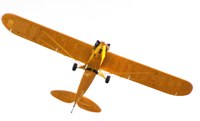
As big-plane companies disappeared in the Great Depression, Piper soared. Available only in bright yellow, the J-3 Cub could be seen everywhere. It became one of the most important airplanes in history, and the most widely-used American-made light plane for three decades. It was especially important as America's most popular training plane (before the development of the side-by-side, tricycle-geared, Cessna 150, in about 1960). Following a fire that wiped out the Bradford factory, Piper moved the company to an abandoned silk mill, in Lock Haven, Pennsylvania, and 200 Bradford workers followed. The new Piper factory, patterned on Ford Motor Company's innovative, efficient "assembly line" concept, turned out thousands of cheap, popular airplanes. It was a boon to the depressed local economy, as Piper hired hundreds more workers.
 [It is worth mentioning that Gilbert Taylor, the Cub's designer, went on to create the Taylor Aircraft Co., and developed an alternative to the J-3 Cub with side-by-side seating, called the Taylorcraft (shown here in front of a Cub). Though never as popular as Piper's J-3 Cub, this gentle, efficient, popular plane -- in various versions -- has been in and out of production since the 1930's, and has been manufactured as recently as 1992.]
[It is worth mentioning that Gilbert Taylor, the Cub's designer, went on to create the Taylor Aircraft Co., and developed an alternative to the J-3 Cub with side-by-side seating, called the Taylorcraft (shown here in front of a Cub). Though never as popular as Piper's J-3 Cub, this gentle, efficient, popular plane -- in various versions -- has been in and out of production since the 1930's, and has been manufactured as recently as 1992.]
Cubs at War
As America began to expect being dragged into World War II, the Piper Cub was used in the thousands in the "Civilian Pilot Training Program" (CPTP), which trained over 60,000 Americans to fly, preparing America's airpower future for the War. Throughout WWII, the Cub was used for training, and most of America's combat pilots would first learn to fly in a Cub.
During World War II, all the Cubs found service in the military, or in the Civil Air Patrol -- a militarized civilian organization providing aviation support in the U.S. -- freeing military aircraft for the war. CAP planes flew coastal and border patrol, search-and-rescue, courier missions and many other non-combat operations across the nation during WWII, and Pipers' planes were very prominent participants in CAP service.
In olive-drab green paint, the Cub (officially designated "L-4") also became the pre-eminent military "Grasshopper" plane. Cubs, and other "L-planes" (like the Aeronca Champ, Stinsons, Porterfields and Luscombes) were painted in military colors, and sent to fly countless military missions.
With strong backing from General Dwight Eisenhower (Supreme Allied Commander in Europe, who learned to fly a Cub), these various tiny taildraggers, mostly two-seat, rag-winged "puddle jumpers" became the Army's main battlefield observation platforms, and were used for most artillery spotting and U.S. coastal submarine patrol. Reconnaisance, missions, too, were commonly appointed to these "low-and-slow" flyers, because they could get a much better look at the objective than fast-and-high fighter planes.
Grasshopper Cubs were used for ferrying generals and the wounded between battlefields and rear areas, and for moving small-but-critical supplies and communications, and maintaining liason (hence the "L" designation) between various Army groups. Before the availability of helicopters, the L-4 and its kin created miitary "ground-support aviation" -- a critical mission which would be gradually shifted mostly to modern helicopters.
Early Cub Variants - wider, longer, stronger, faster
The J-5 was transformed into the HE-1 aerial ambulance, modified to carry a stretcher in the aft fuselage and tailboom, with a hatch across the top of the plane that opened to allow easy loading and unloading -- providing safe and ready transport of wounded servicemen from combat zones to medical facilities.
Post-War Rag-Wing Taildraggers
Following the war, Piper returned to mass-production of its civilian line, with minor but useful modifications. Emphasizing a new era, Piper changed its model numbers, replacing of the traditional "J-" (as in "Jamoneau) with "PA-" (as in "Piper Aircraft").
A streamlined cowling was developed, fully-enclosing the engine of the J-3 Cub (which became the slightly faster "PA-11 Cub"). The same modification sped up triple-seat J-5 Cub Cruiser which became the "PA-12 Cub Cruiser."
To fit four people (officially, if not safely), the PA-12 was widenened, strengthened, and boosted to 115 hp and 100-mph speed, to become the "PA-16 Clipper" -- evoking the image of the famous fast "Clipper" sailing ships. Pan American Airlines, however, claimed "Clipper" as the trade name for their ocean-spanning airliners -- most famously the "China Clipper" flying boats -- and forced Piper to switch their little plane's name to something else. So Piper renamed the Clipper as the "PA-16 Family Cruiser."
These latter designs would lead Piper in a new direction, away from the crude, utilitarian Cub, and towards comfortable, social air travel -- while still following the construction methods that had made the Cub affordable, durable and practical.
The Super Cub became a legendary force in "bush flying" -- around the world -- operating in remote areas, in open fields and clearings, or on floats in wilderness lakes and rivers, or on skis anywhere a flat patch of snow could be found.
Since the 1930s many versions of the Cub and SuperCub have been built. (Variants or imitations, of sorts, are manufactured today by CubCrafters -- using carbon-fiber components and typically bigger engines -- and a metal-skinned imitation of the SuperCub is popular as the Aviat Husky. Even some popular ultralights like the J3 Kitten and Nostalgair / Preceptor / Global N3 Pup were essentially designed as scaled-down Cub imitations.)
Subsequent versions of side-by-side and stretched, 4-seat models models of the Cub were developed, using a shortened wing, trading low-speed lift for more strength and less drag, permitting faster flying.
Known, colloquially, as the "short-wing Piper" line, it included compact side-by-side 2-seaters like the PA-15/PA-17 Vagabond (right), but would eventually grow to include 4-seaters.
While the Cub, typically cruised at 60mph through the air, the Vagabond (on the same horsepower, hauling the same two people) could easily cut through the air at 75mph -- a notable advantage when battling the 20-40mph winds commonly encountered aloft.
Piper's short-wing "taildragger" line culminated in the tail-dragging 4-seat PA-20 Pacer (below, right). With engines ranging from 125 to 135 horsepower, the plane's cruise speeds ranged from 100 to 125 mph, while carrying up to four people or full fuel tanks (it couldn't lift both, so some trade-offs were required). The extra speed, and real 4-seat lifting ability, made lightplane flying much more practical for many travelers.
When slowing down or battling crosswinds on landing, most tailwheeled planes were susceptible to "ground-looping" -- the tail swinging around from the back while the plane was moving -- resulting in loss of control. But the stubby short-wing Pipers (many cursed with poor brakes, and all perched on narrow landing gear, guided on the ground by a rather ineffective, sometimes-steerable tailwheel) were especially susceptible to the problem.
Tricycle Wars
To solve the ground-looping problem, and leapfrog ahead of Cessna, Piper began offering a version of the Pacer with "tricycle" landing gear: the PA-22 Tri-Pacer (right), in 1951. Replacing the dinky tailwheel (in back) with a big nosewheel (in front) gave an airplane positve steering control, eliminating most of the groundloop problems, and making the airplane generally easier to handle. It also raised the pilot higher above the nose of the airplane, greatly improving visibility (and hence safety) on the ground.
Tricycle gear was not new: It had been used on a few airplanes even before World War II (most notably on the ERCO "Ercoupe", below, right).
But before the war, smooth-surfaced runways were few and far between. Airplanes landed in open spaces everywhere.
Tricycle-geared planes did not work well from rough landing places, like the rutted roads, plowed fields and cow pastures so commonly used by light planes before the war.
But World War II had changed the issue. In the United States and Europe, the war years had brought the widespread development of good, smooth runways for such things as pilot training, test-flying aircraft, cargo and troop transport flights, and other military operations -- along with the rapid growth of passenger airlines immediately before and after the war. Hundreds of new public airports had been built or greatly improved during these years, and -- after the war -- hundreds of abandoned military bases and auxiliary fields became private and public airports. Local airports, with good, smooth runways, were becoming commonplace -- and by the 1950's, most planes were operating from them, rather than from open spaces. By 1951, smooth-runway operations were routine, and pilots were ready for the safe-and-easy steering of tricycle gear.
Whether because of clever calculation, or sheer luck, the Tri-Pacer's introduction was well-timed. It was a quick success, immediately outselling not only the Pacer, but all other tail-dragger light planes, including Cessna's popular Model 170. The tricycle gear did the trick, and suddenly light plane buyers abandoned Cessna to return to Piper.
Like their contemporary rivals from Cessna, the "short-wing" Pipers were modest craft, most of which could rarely lift a full load of full-sized adults, if full fuel was carried -- and none of them suffered from blazing speed. Still, these simple, reliable, economical airplanes provided the backbone of 1950's personal aviation. Over 10,000 of the various "short-wing Piper" versions were sold, and hundreds of these sturdy birds continue in use to this day -- backed by the "Short-Wing Piper Club" (SWPC) -- and still popular on the used-plane market, though nearly half a century old.
Modifications, including metal skin over the metal frame, Cessna spring-steel landing gear and "drooped" wingtips help keep these planes competitive. Ironically, though, one of the most popular modifications to the PA-22 Tri-Pacer is the removal of the nosewheel, and its 90 pounds of hardware, to put the plane back on a PA-20 Pacer tailwheel! The resulting "PA-22-20" (right) -- with the light weight of the Pacer and the bigger engine of the Tri-Pacer -- outperforms them both.
Stinson joins Piper
In the late 1940's, about the same time as the zenith of the short-wing Pipers, Piper Aircraft Co. -- still reaching for a stouter 4-seat plane, which could hold four full-sized people and full fuel -- bought out the floundering Stinson Aircraft Co. -- by now a division of Consolidated Aircraft -- and finished selling off Stinson's stock of Model 108 / Voyager / Station Wagon planes (Model 108-1, at left), which were roughly simliar to (and competing with) the Pacer.
The hardy Stinsons -- though rather slow for their 150-190hp Franklin engines (cruising about 110-120mph) -- could definitely haul four full sized adults, and baggage, along with full fuel tanks. But Piper would have to go much farther to find a modern way to carry a full load of people quickly, reliably and efficiently. And it would.
Twin-Engine Pipers
The lowest-cost twin on the market, at the time, the Apache did much to create modern business aviation, stimulated the development of charter operators and tiny mail- and freight-hauling operations, and was even a force in the early development of commuter airlines.
In the late 1950's, the Apache's 150/160-hp engines were replaced with 235-hp engines, resolving much of the Apache's weak performance. (In the 1960s and later, Seguin Aviation in Seguin, Texas became famous for its variety of speed, safety and performance modifications of the Apache, culminating in their "Geronimo" conversions with twin 180-hp Lycomings; today, a large percentage of Apaches have one or more of their modifications.)
Built by the thousands, with rugged, durable construction, the older, smaller Apaches have lasted far longer, in greater numbers, than any other twin of their era. With the low performance of their smaller engines, they aren't exactly coveted as traveling machines, which lowers their price considerably, comapred to other twins of their age. But the small Apache engines make the Apache cheap to operate, by the hour (if not by the mile) and consequently makes the plane ideal for use as a training plane -- especially given its low selling price. Consequently, for most of its lifetime, the Apache has been the pre-eminent plane for training multi-engine pilots -- a role it still holds today, over four decades after it was discontinued.
MODERN PIPERS
Aluminum-skinned planes had long been heavy and more expensive to build than conventional tube-and-fabric construction. But the rapid advances in materials and manufacturing during World War II had changed all that. Now, "Spam can" design was the overwhelmingly preferred concept for military and commerical airplanes, and growing as a decisive trend in lighplane design.
Another major wartime trend was towards "cantilever" wings -- wings with no external bracing struts or wires -- providing a much sleeker airplane, with less drag and more speed. Retractable landing gear, too, had become common -- sharply reducing drag, as well.
While the twin-engined PA-23 Apache (left) introduced retractable landing gear, cantilever wings and all-metal construction to the Piper line, it retained the traditional, heavy, cage-like, steel-tube inner structure -- and was a big, expensive plane mainly for business and commercial operators.
Facing competition from Cessna (Model 140, shown at left) and Beech (Model 35 Bonanza, shown at right) -- who had mastered modern, lightweight, aluminum, "stressed-skin" construction -- Piper's cloth-wrapped, steel-tube trusswork, high-wing, single-engine line (epitomized by the tube-and-rag PA-22 TriPacer, below, left) began to lose ground in the market.
The advent of tricycle gear on all-metal Beech Bonanzas, and later Cessna models (responding to the example of Piper's Tri-Pacer), put Piper farther behind, and though Piper had preceded Cessna with tricycle gear on the short-wing Pipers, the result had yielded a rather antiquated design (the boxy, tube-and-rag, strut-winged, PA-22 Tri-Pacer, noted above). A fundamental change was due.
Piper addressed the issue with two answers:
The Comanche:

 Multiple variations of the Cub were been built, as well. A 75-hp side-by-side version of the Cub was built as the "J-4 Cub Coupe", and a stretched 90-hp model, the "J-5 Cub Cruiser," accommodated 3 skinny people (actually, a skinny kid and an adult or two),
Multiple variations of the Cub were been built, as well. A 75-hp side-by-side version of the Cub was built as the "J-4 Cub Coupe", and a stretched 90-hp model, the "J-5 Cub Cruiser," accommodated 3 skinny people (actually, a skinny kid and an adult or two),
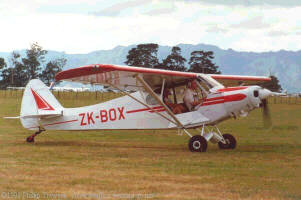 But the Cub, itself, remained a popular concept, and endured in higher-powered versions, from 90 up to 150 horsepower, as the "PA-18 Super Cub" (left), and the line continued in production until 1992 -- an incredible lifetime for a 1930's-era basic design.
But the Cub, itself, remained a popular concept, and endured in higher-powered versions, from 90 up to 150 horsepower, as the "PA-18 Super Cub" (left), and the line continued in production until 1992 -- an incredible lifetime for a 1930's-era basic design.
(NOTE: For more on the Piper Cub and its variants, see the article on the Piper Cub in the "8 Great Aircraft" series, on this website.)
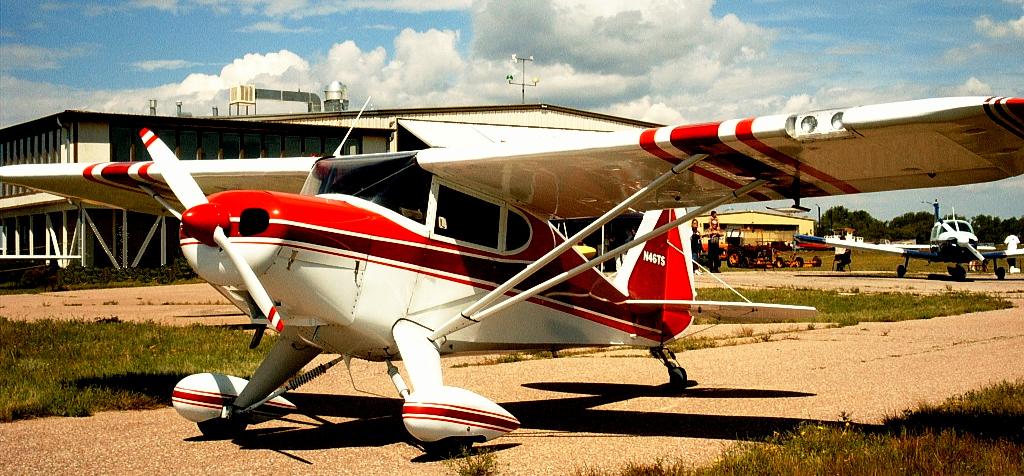 Short-Wing Pipers --
Short-Wing Pipers --
--back to the Chummy Concept
(side-by-side seating, and real speed):
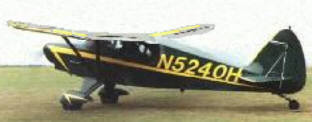 The short-wing Pipers used the inexpensive, proven, "tube-and-fabric" construction of the Cub, mated to bigger and bigger engines, and larger and larger cabins. But the shorter wings, and overall stubbiness of the planes, gave them rather demanding flying manners, compared to the delightful, forgiving Cub. In particular, the heavily-loaded four-seaters tended to sink rapidly when power was reduced, and bounced around a lot in turbulence.
The short-wing Pipers used the inexpensive, proven, "tube-and-fabric" construction of the Cub, mated to bigger and bigger engines, and larger and larger cabins. But the shorter wings, and overall stubbiness of the planes, gave them rather demanding flying manners, compared to the delightful, forgiving Cub. In particular, the heavily-loaded four-seaters tended to sink rapidly when power was reduced, and bounced around a lot in turbulence.
 The antiquated stubby, tube-and-fabric construction of the short-wing Piper line was soon eclipsed by the competing 2-seat Cessna 120/140 and 4-seat Cessna 170 (right), whose long, sleek bodies were built with modern "stressed-skin" construction -- using streamlined, lightweight-but-strong aluminum skin for structural strength -- in place of the heavy steel-tube frame, and fabric skin, of the short-wing Pipers and other planes. The "tin-can" Cessnas' long wings and tails gave them greater stability and gentility in the air, along with superior takeoff, climbing and gliding performance. Their cabins seemed a bit roomier, and visibility a bit better. And their shiny, rounded aluminum sides shone with modern elegance. Piper soon noticed Pacer customers drifting away towards Cessna.
The antiquated stubby, tube-and-fabric construction of the short-wing Piper line was soon eclipsed by the competing 2-seat Cessna 120/140 and 4-seat Cessna 170 (right), whose long, sleek bodies were built with modern "stressed-skin" construction -- using streamlined, lightweight-but-strong aluminum skin for structural strength -- in place of the heavy steel-tube frame, and fabric skin, of the short-wing Pipers and other planes. The "tin-can" Cessnas' long wings and tails gave them greater stability and gentility in the air, along with superior takeoff, climbing and gliding performance. Their cabins seemed a bit roomier, and visibility a bit better. And their shiny, rounded aluminum sides shone with modern elegance. Piper soon noticed Pacer customers drifting away towards Cessna.
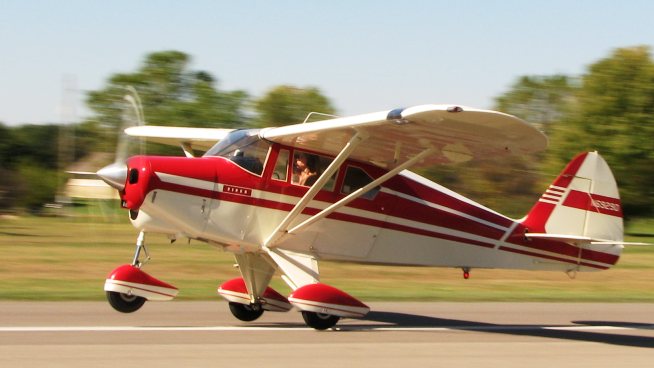
 The nosewheels could get bogged down or snagged in ruts, and their long, narrow, delicate, shock-absorbing struts were easily damaged. Bouncing through a rough field, the propeller on a tricycle-geared airplane could whack into a bump before the nosewheel reached the bump and lifted the plane clear. But a traditional "conventional-geared" plane, resting on a tailwheel, kept the nose and propeller pointed high, and clear of most bumps on the ground.
The nosewheels could get bogged down or snagged in ruts, and their long, narrow, delicate, shock-absorbing struts were easily damaged. Bouncing through a rough field, the propeller on a tricycle-geared airplane could whack into a bump before the nosewheel reached the bump and lifted the plane clear. But a traditional "conventional-geared" plane, resting on a tailwheel, kept the nose and propeller pointed high, and clear of most bumps on the ground.

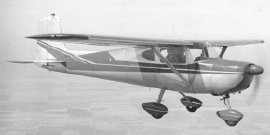 Piper managed to sell thousands of Tri-Pacers (over 7,600 before the end of production in 1959) before Cessna caught up. But five years later, Cessna finally released a tricycle-geared version of its Model 170 (the 172/Skyhawk, at left), followed in 1958 by the 2-seat Cessna 150 (right), locking up the trainer market for Cessna. Both Cessnas would go on to become the all-time best-sellers in their respective classes (in fact, the 172 would become the biggest selling light plane of all time, even surpassing the mighty Cub).
Piper managed to sell thousands of Tri-Pacers (over 7,600 before the end of production in 1959) before Cessna caught up. But five years later, Cessna finally released a tricycle-geared version of its Model 170 (the 172/Skyhawk, at left), followed in 1958 by the 2-seat Cessna 150 (right), locking up the trainer market for Cessna. Both Cessnas would go on to become the all-time best-sellers in their respective classes (in fact, the 172 would become the biggest selling light plane of all time, even surpassing the mighty Cub).
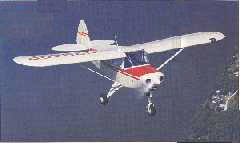 To compete with the 2-seat, tricycled Cessna 150, which had seized the market for new trainer planes, Piper stepped back and developed a cheaper, low-powered, 2-seat version of the Tri-Pacer -- the PA-22-108 (usually called the Colt, left), and released it in 1960-61. But the crude, old-fashioned Colt was too little, too late. The modern, efficient Cessna 150 soon owned the trainer market, and Cessna began eagerly welcoming new buyers for its bigger planes from the ranks of the new pilots that had learned in the little Cessnas. From this point, forward, Piper would never again outsell Cessna.
To compete with the 2-seat, tricycled Cessna 150, which had seized the market for new trainer planes, Piper stepped back and developed a cheaper, low-powered, 2-seat version of the Tri-Pacer -- the PA-22-108 (usually called the Colt, left), and released it in 1960-61. But the crude, old-fashioned Colt was too little, too late. The modern, efficient Cessna 150 soon owned the trainer market, and Cessna began eagerly welcoming new buyers for its bigger planes from the ranks of the new pilots that had learned in the little Cessnas. From this point, forward, Piper would never again outsell Cessna.
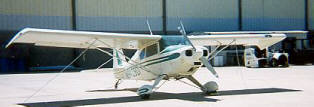
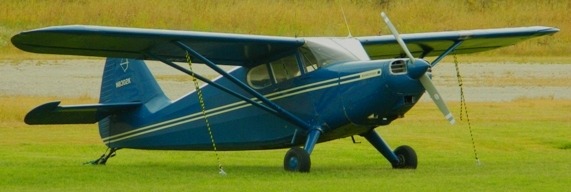

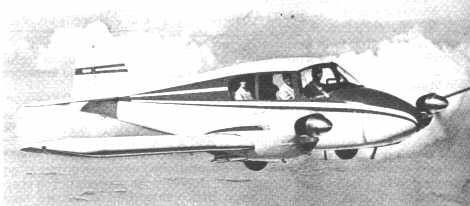 At this time, also, following up on a design begun by its new Stinson Division, Piper began offering a low-wing, 4/5-seat twin-engined plane, called the PA-23 Apache. It was slow for a twin (typical cruise about 150 mph), but faster than most single-engine planes, and -- for a twin -- economical, functional and rugged. Though the Apache fuselage retained the steel-tube internal trusswork of old-fashioned tube-and-rag airplanes, its skin was sleek, durable, modern aluminum. With the all-metal twin riding a clean "cantilever" wing (no external bracing), it was a big step towards modern design for Piper.
At this time, also, following up on a design begun by its new Stinson Division, Piper began offering a low-wing, 4/5-seat twin-engined plane, called the PA-23 Apache. It was slow for a twin (typical cruise about 150 mph), but faster than most single-engine planes, and -- for a twin -- economical, functional and rugged. Though the Apache fuselage retained the steel-tube internal trusswork of old-fashioned tube-and-rag airplanes, its skin was sleek, durable, modern aluminum. With the all-metal twin riding a clean "cantilever" wing (no external bracing), it was a big step towards modern design for Piper.
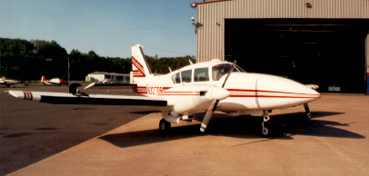 In the early 1960's, the Apache design was boosted to 250-hp and the frame was stretched, strengthened and streamlined to produce the stout, swift Aztec (left), which became very popular as a heavy-duty utility airplane -- especially for hauling cargo in and out of remote areas. Many have been fitted with floats for use in areas where landing strips were few and far between.
In the early 1960's, the Apache design was boosted to 250-hp and the frame was stretched, strengthened and streamlined to produce the stout, swift Aztec (left), which became very popular as a heavy-duty utility airplane -- especially for hauling cargo in and out of remote areas. Many have been fitted with floats for use in areas where landing strips were few and far between.

In place of heavy traditional steel-tube framework, wrapped in cloth ("tube-and-rag") style of construction of the Cubs and other early planes, World War II had brought about a revolution in airplane design -- particularly a focus on all-metal airplanes using modern "stressed skin," hollow-shell ("semi-monocoque" -- pronounced "SEM-ee MONN-o-cock") construction -- where the thin aluminum skin of the airplane (with reinforcing attachments) provided the airplane's structural strength, rather like a hollow, empty, tin can.


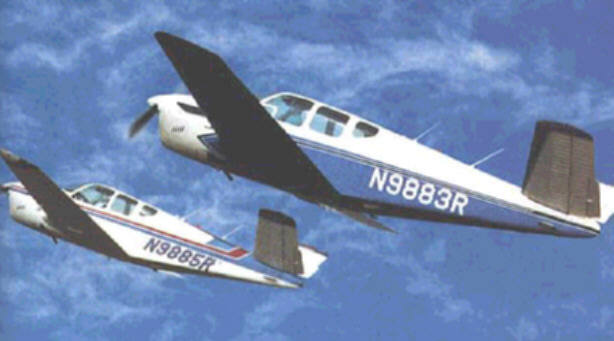
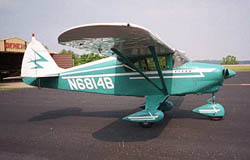
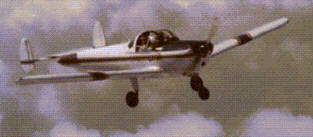 At an aviation convention in 1951, the matter was brought to the attention of Bill Piper, Sr. and his son Bill, Jr., over dinner, by noted engineer Fred Weick -- who had pioneered tricycle-geared, metal-skinned light planes, before World War II, with his own popular "Ercoupe" (right). The conversation would be reluctantly noted by the Pipers.
At an aviation convention in 1951, the matter was brought to the attention of Bill Piper, Sr. and his son Bill, Jr., over dinner, by noted engineer Fred Weick -- who had pioneered tricycle-geared, metal-skinned light planes, before World War II, with his own popular "Ercoupe" (right). The conversation would be reluctantly noted by the Pipers.
and
- Piper's speedy single
Piper's first all-metal, strutless, retractrable-geared, semi-monocoque plane, appearing in the late 1950's, was the sleek PA-24 Comanche, which abandoned the heavy steel-tube truss inner frame that had characterized all Pipers up to this time.
The result was a light, high-performance airplane. The Comanche was a streamlined, low-wing, 4-seater, with drag-reducing retractable landing gear and a precisely-contoured "laminar-flow" wing for minimum drag. With its modern features, the fast, efficient Comanche which cruised at well over 160 mph, for long distances.
The Comanche competed fairly successfully with the popular Beech Bonanza.
The Comanche would continue in production for over a decade, and eventually lead to one of Piper's most admired twins (See Twin Comanche, below).
The Cherokee
In 1953, the Pipers called on the modern-lightplane expert they'd lunched with a couple of years earlier -- Fred Weick (then working on a new kind of cropduster plane at Texas A&M University) -- inviting Weick to come and help Piper Aircaft Co. develop a new, modern, metal-skinned light plane. Weick, with one of Bill Piper's sons, Howard "Pug" Piper, started a new development facility in Vero Beach, Florida, where they began developing new single-engined airplane designs with the help of engineers Karl Bergey, John Thorp, Bob Lipinsky and Henry Hoeltje.
As a result, the "short-wing Piper" line was replaced in the early 1960's by the aluminum-skinned, low-wing PA-28 "Cherokee" line, built at the new facility in Vero Beach. This was to be the beginnning of another line of fabulously popular Piper planes -- radically different from the Piper Cub and its rag-winged offspring.
Pound-for-pound, this simple construction technique tended to be stronger than the complex steel-tube truss construction of traditional planes (like the Cub and the short-wing Pipers). Earlier manufacturing techniques to form and join the semi-monocoque metal parts had been complex and expensive, as reflected in the high price of the Comanche. The team of engineers (chiefly Weick, Bergey and Thorp), however, carefully designed the Cherokee's airframe to be simpler and lighter than the Comanche (see the skeleton, below).
Another hallmark of the Cherokee was its simple, fat, rectangular wing -- shaped much like a Hershey chocolate bar -- which permitted many of the same gentle handling characteristics as the "rag-covered" short-wing Pipers. The wing had a few other benefits, too. Its fat center, peaking about a third of the way back from the leading edge, permitted the installation of a single, large main spar, saving the weight and construction complexity of a typical multi-spar wing. And, best of all, the wing needed no drag-producing external bracing struts -- unlike the older Pipers, and even the newer Cessnas. The wing also stayed the same shape, from the wing root (next to the fuselage) almost all the way to the wingtip -- permitting efficient mass-production of the wing sections. The cheap, well-mannered "Hershey-bar" wing would continue on all Cherokee planes until the mid-1970's.
Other efficiency techniques included using molded plastic and fiberglass for the interior, and for the complex multiple-curve pieces of the exterior, such as the nose cowling, stabilator, and wingtips. Overall, the net effect of the Cherokee's thrifty design yielded a 4-seat plane that used half as many parts as the Comanche -- with a corresponding reduction in manufacturing and maintenance costs. Over the next few decades, the efficient Cherokee line would grow to include planes ranging from a 2-seat trainer to a 7-seat light twin -- becoming so popular a basic design that over 50,000 Cherokee variants would be sold worldwide, making the basic Cherokee design one of the most successful designs in the history of aviation.
Compared to the earlier rag-wing Piper Tri-Pacer and its kin, the Cherokee 150/160 offered real comfort, without sacrificing speed and efficiency. It could easily cruise as fast as the Tri-Pacer (125-130mph), on the same horsepower as the Tri-Pacer, while offering a comfortable 42-inch-wide cabin -- compared to the cramped, 35-inch-wide cabin of the Tri-Pacer, and it generally had better flying characteristics all-around.
It soon became apparent, however, that the underpowered (150-horsepower) 4-seat Cherokee 150 shared a limitation of the Tri-Pacer: it could not lift four normal-sized adults, let alone their baggage, if the fuel tanks were full. So Piper quickly engineered a Cherokee 160 -- essentially the same plane, but with an extra 10 horses under the hood. The Cherokee 160 could officially squeeze 4 people (at the FAA's official 170-pounds-per-person) and full fuel into the compact airframe, and safely lift the whole collection off the ground.
But the Cherokee 160's sea-level performance figures faded quickly on a hot or humid day, or when flying from high-altitude airports in the high plains or mountain areas. And if the pilot included much in the way of optional instruments and radios, or even baggage, the Cherokee 160 was quickly overloaded.
But Piper wasn't about to rest on its laurels. These were the prosperous, booming 1960's, when people had money to spend on airplanes. They were constantly buying bigger and better. And Piper wanted to sell it to them.
The Cherokee 180 (later renamed briefly as the "Cherokee C" or "Challenger") gave the Cessna 172/Skyhawk its most serious competition ever, an intense and successful rivalry that would continue well into the 21st century.
Though the 140 had an optional back "bench" seat, it was usually empty because of the limited power and load capacity of the 140. However, the 140 excelled as a trainer because of its gentle flying manners, more-than-adequate power for two, wide-set tricycle gear (ideal when landing in in crosswinds or turbulence), large, well-organized instrument panel, and low purchase and operating costs. Further, with an extra 40-85 hp more than most 2-seaters, the Cherokee 140 sped along at over 130 mph (easily 15 mph faster than the Cessna 150, and over 50 mph faster than it's Piper training predecessor, the Cub).
And -- of course -- the Cherokee 140 had a decisive advantage over other "trainer" planes at the bottom of the price spectrum: room for an additional pair of passengers that could be carried when fuel tanks were half-empty. That advantage was firmly reinforced when the Cherokee 140 reverted to the full 150 horsepower of its original predecessor.
As a good primary trainer, the Cherokee 140 -- also offered in a stripped-down, trainer-only version as the "FliteLiner 140" -- fostered brand loyalty among student pilots, who would move on from their flight school training to rent and buy their own planes for casual and business use. For those who trained in the gentle, comfortable Cherokee 140, their first choice was often another Piper -- especially another Cherokee. The littlest Cherokees would become one of Piper's most valuable sales tools for promoting a whole new line of larger Cherokees and modern Pipers.
Cherokee Competitors
The Cherokee 140, however, would never outsell the trainer that had taken the place of the Piper Cub in the late 1950's -- the wildly-popular Cessna 150 (right). The Cessna 150 had been designed from the start as a 2-seater, and was smaller and lighter, with fewer parts, and flew just fine with a smaller engine -- with the result that it was a much cheaper trainer to buy and operate than Piper's Cherokee 140. Despite the many virtues of the Cherokee 140, most flight schools continued to train pilots with Cessna 150's -- building brand loyalty to Cessna, and helping to fuel Cessna's acceleration past Piper as the most popular maker of light planes.
About this time, Beech Aircraft -- who dominated the market for high-performance, single-engine, retractable-geared planes with its Beech Bonanza -- tried to elbow its way into the low-end singles market with the
Despite being offered in a broad array of versions like the Cherokee, Beech's Musketeer line (even when re-christened Sport, Sundowner, Super and Sierra) failed to gain a major share of the single-engine market. The Musketeers would only be sold by the hundreds, and discontinued after less than a decade -- while the Cherokees, decade after decade, would be sold by the thousands upon thousands.
Cherokee Growth: More Muscle
In 1964, Piper put some real muscle into the Cherokee with the 235-hp Cherokee 235 (later the "Cherokee D" or "Charger"). To lift a bigger payload, and the bigger engine needed to pull it, the Cherokee wing was stretched another foot on each end, and the extended wingtips held extra fuel to feed the thirsty big engine.
The Cherokee 235 provided exceptional hauling, climb and short-field performance, and could lift four big people, and their luggage, along with full fuel, and speed through the air at about 150-160 miles per hour -- putting it squarely in competiton with Cessna's coveted Cessna 182/Skylane, and even making Beech Bonanza buyers think twice.
Good Times
Under the energetic leadership of Bill Piper's sons -- Tony (who led the company, while officially leaving the title of Chairman of the Board to his father), "Pug" (who oversaw design developments) and Bill, Jr. (who kept everyone working smoothly together) -- the company had continued to innovate and grow. However, in 1960, Tony quit the company, and moved away to manage family property in Texas, leaving the leadership mostly to "Pug." Nevertheless, the 1960's were profitable times for the general-aviation industry, and Piper shared in the wealth.
The Twin Comanche:
Though a bit under-powered for a light twin (a pair of 160-hp Lycomings), with limited hauling capacity (4-6 seats, which couldn't always be filled if the tanks were full) and consequently limited range, it was fast and efficient (turbo'ed models topping 220 mph) -- especially when compared to the Apache and some competitors' light twins (most of which used much larger engines to fly at Twin Comanche speeds).
Early models easily topped cruising over 180 mph, and later models neared 200 mph, topping 9 miles per gallon -- with turbocharged models topping 220mph at at 10,000 feet, or cruising over weather (with oxygen masks) at 25,000 feet. A few were even fitted with deicing boots to penetrate the worst flyable weather.) Late models ranged up to 800-1,000 miles, or more, and could extend range with optional tip tanks.
The "bulletproof" 160-hp Lycoming engines (already having been proven in the Tri-Pacer, Apache and Cherokee) proved extremely economical -- not only for their low fuel consumption, but also for their very high reliability -- cutting costly maintenance.
With the low purchase and operating costs of a very-light-twin, the Twin Comanche began to replace the aging Apaches as the preferred civilian twin-engine training plane.
In any engine failure on a normal twin, the drag of the dead engine on one side, and the overpowering thrust of the good engine on the other side, causes the plane to try to "yaw" and roll towards the dead engine. The pilot must use the rudder heavily (and, in slow flight, also the ailerons) to steer against this left twist, to keep the plane flying properly.
Because both engines on most twins (including early Twin Comanches) turn clockwise (as viewed from the back), their prop's downswing (and resulting greatest bite during low-speed / high-angle-of-attack flight) -- and hence their predominant thrust -- comes more from the right side of the prop arc, rather than the left side. This results in some asymmetry of thrust that tends to try and pull the plane to the left (see diagram below, left - TOP half: "normal matching engines").
This is not much of a problem if both engines are turning. Minor differences in thrust, or simply the aerodynamic force available to the rudder from the slipstream from both propellers,
And in an "engine-out" situation, it's normally NOT a severe problem... IF the LEFT engine, alone, is running -- since the greater airflow is close to the airplane centerline (the right side of the left prop arc).
Under these conditions, at low speeds -- where the rudder has little airflow and where the wing is dangerously near the stalling point -- the plane then becomes susceptible to a stall, and/or uncontrollable yawing and/or rolling to the left, sometimes leading to an uncontrolled spin, or other loss of control (such as single-engine "rollover") -- which the pilot may not be able to recover from before crashing.
These low-speed control problems during an engine failure are among the chief causes of fatal accidents in "light twin" aircraft.
Risky engine-out training, at low speeds, is an important and common training practice for pilots earning their "multi-engine" rating. This caused the Twin Comanche -- actually designed for speed, but being widely used as a trainer -- to soon develop a nasty reputation as a killer.
To counter the effects of failure of the "critical engine," and reduce the spin and rollover risk, Piper had the engines re-designed as mirror opposites, with the props turning in opposite directions ("counter-rotating"), creating the PA-39 Twin Comanche C/R.
On the C/R model, both propellers' down-swings were towards the inboard (fuselage) side of the engines, near the airplane centerline (see diagram above, left - BOTTOM half: "counter-rotating engines").-- preventing extreme asymmetrical thrust during "critical engine" failures.
Whether because of the counter-rotating engines, or in spite of them, the Twin Comanche crash rate dropped (one reporter's superficial study of NTSB and FAA data concluded that the Twin Comanche's crash rate had dropped by two-thirds). Counter-rotating engines were subsequently fitted to all new Piper piston-engined twins.
The Comanche / Twin Comanche design (most parts were interchangeable) was an expensive plane to make, largely because it used a super-refined "laminar-flow" wing, which required very precise manufacturing. In 1972 -- during a decline in twin sales (complicated by the fact that Piper now had too many twin-engined designs) -- a flood destroyed Piper's Lock Haven plant, including the very expensive tooling and jigs for the Comanche line, so Piper dropped the Comanche line altogether.
Today, used Comanches and Twin Comanches -- still popular as used planes -- are highly prized for their speed, efficiency and racy good looks. Many modifications are available to improve their performance, and one small company is producing the speedy "Bailey Bullet" -- heavily-modified used Twin Comanches, with new engines and extensive improvements.
Cabin-Class Twins
At the other end of the spectrum, Piper decided to build a "cabin-class" twin -- a "medium" twin with enough room for separate cockpit and passenger cabins, with an aisle between the seats, and almost enough headroom for people to walk down the aisle to their seats. This would give them a way to keep customers from outgrowing the Piper line, and switching to the cabin-class Queen Airs of Beech, or 400-series of Cessna.
Thus the "Navajo" was born. Over the next several years, it would undego several incarnations, including:
With their spacious capacity, many seats, efficiency, affordability and simplicity, the The Navajo, and especially the Chieftain became widely used as shorrt-haul "commuter" and "feeder" airliners, ranging from the solid pavement of suburbia and the big city, to the icy, remote hinterlands of Alaska.
-- with Speed, Size, an Extra Engine or a New Wing
In the mid-1960's two big innovations happened to the Cherokee line: The retractable-geared PA-28R Cherokee Arrow, and the stretched Cherokee Six.
One feature helped the Arrow stand out from the crowd: the invention of an automatic gear-lowering system, to prevent accidental "gear-up" landings due to pilot error (a common problem in retractable-geared airplanes). Using a sensor detecting the speed of the propeller blast, the system detected when the plane was slowing down for landing, and automatically extended the landing gear.
The Arrow retained the gentle flying characteristics, capacity and performance of the Cherokee 180, but with an extra 15-20 mph in speed. The Cherokee Arrow (eventually renamed just the "Arrow") soon was outselling the industry's retractable "big guns": the Beech Bonanza, the Cessna 210 Centurion and (a mixed blessing) Piper's own Comanche -- all of which were much larger and faster, but much, much more-expensive.
The Cherokee-style affordability, gentle manners and comparatively low operating and maintenance costs of the Arrow made it the preferred trainer for schools providing pilot training for "complex" (retractable-gear) ratings -- a role it largely retains to the present day.
But Piper's mostly-cosmetic switch to a T-tail undermined the Piper's market appeal. T-tails did little to improve anything about the airplane, and pilots were concerned about its susceptibility to "deep-stall" situations, in which turbulence from the wing, during steep angles of flight, could "blanket" the horizontal tail and make it ineffective, resulting in loss-of-control. Piper soon returned to the conventional tails on most of its planes.
Stretching the Cherokee -- 3 Ways
Starting in 1976, a retractable-geared version, the Lance, was also made, allowing slightly greater speed and efficiency. But Piper's mostly-cosmetic switch to a T-tail nearly killed the Lance's appeal; the conventional tail soon returned. Although their low wings and tricycle gear kept them from becoming very popular as bush planes, the Cherokee Six -- and its variants -- became very popular as powerful, cost-effective haulers.
It was especially popular as a replacement for aging Apaches, for buyers who didn't want to go all the way up to the expensive, thirsty 250-hp Aztec. While most of the Piper twins have faded away, this simple, dependable, not-too-sexy / not-too-obsolete twin just keeps bringing serious buyers back to Piper.
Its efficiency -- matched to the comparatively gentle manners and low costs of the Cherokee line -- led to it replacing the ancient Apache and discontinued Twin Comanche as a popular twin-engine trainer.
The Seminole also became popular with flying clubs and charter services for the same reason. [Under the guidance of a Piper defector, Beech aircraft soon applied the same idea to create the popular Beech Duchess light twin, from Beech's Cherokee-like "Musketeer" single-engine line.] Although the Seminole has gone in and out of production, its popularity, and lack of competition in its market niche, keeps the Seminole alive.
Business Battles
To ward off the hostile takeover, which was sure to cost the Piper family its control (and probably even its jobs) at Piper Aircraft, the family approached Bangor-Punta, a large investment company who was also a rival to Chris-Craft in the boat business. Thinking that Bangor-Punta would preserve the leadership roles of the Piper family, the family sold their shares to B-P which then purchased enough additional shares on the open market to get control of Piper Aircraft. B-P then promptly pushed out the directors appointed by Chris-Craft, and a long legal battle between the two big companies ensued -- all the way to the U.S. Supreme Court, which ultimately backed Bangor-Punta.
In the middle of this mess, 89-year-old Bill Piper, Sr., died on Jan 15th, 1970. Bangor-Punta, Chris-Craft and the Piper family continued to battle, until the Piper family was thrown out of the company in 1973. Over the next several years, Piper Aircraft would go through a series of changes-of-ownership.
After being thrown out of Piper Aircraft, "Pug" Piper, who had been the Director of Engineering, defected to Beech Aircraft, where he was given the same role. There, the exiled engineer developed the Beech Skipper and Duchess -- near-copies of the newly-developed Piper Tomahawk and Seminole.
Tapered Wings & Tomahawks
In the mid-1970's, Piper Aircraft redesigned the simple "Hershey-Bar" rectangular wings of the Cherokees, making them similar in shape to the more-refined Cessna 172/182's wing, by slightly stretching and tapering the outer half of each wing.
This improved slow-speed handling and reduced drag (improving fuel-efficiency). However, the additional structure, and other "improvements" that added weight, cut into the advantages of this new, long, slender "high-aspect-ratio" wing. Some advantages were negated by some disadvantages.
Overall, however, the market seemed to appreciate this move. This major redesign resulted in new model variant numbers, and new names:
Back to Basics: the Tomahawk
By the mid-1960's it was clear that Piper planes were no longer the dominant beginners' planes. And that affected Piper sales -- for students tended to purchase the same brand of airplane in which they had learned to fly. Flight-school operators preferred to train students in the cheap, efficient, little 2-seat Cessna 150, rather than Piper's smallest Cherokee, the 2+2-seat Cherokee 140 or Warrior. This was a boon to Cessna, whose 150 -- and whose next-larger standard models, the 172/Skyhawk and 182/Skylane -- became the best-selling light planes of all time.
It was quite popular for a while, though many pilots did not care for its T-tail (see A Tail of Two Tails, above) When the Piper family lost control of the company during a hostile takeover during the 1970's, the company's director of research & development, "Pug" Piper, defected to Beech Aircraft, where a nearly-identical design soon appeared, as the Beech Skipper. Never able to overcome the popularity of the Cessna 150 (and its successor, the 152), the Tomahawk was finally dropped in 1982.
Piper Goes for Speed -- and Size
Big Plane, One Engine
With single-engine reliability growing steadily, and twin-engine costs growing rapidly, a strong trend has developed towards squeezing twin-engine comfort and capabilities into single-engine aircraft. The latest chapter in the Piper lineup has been the development of the pressurized, single-engine, cabin-class Piper Malibu, a very large single-engine plane with medium-twin comfort and performance on a single 310-hp engine. A bit more horsepower made it a more acceptable performer, in the 350-hp Malibu Mirage version (essentially today's M350).
Piper's Oddities

 Early models struggled along on 180 hp, so later 250/260-hp models were preferred. Even a 400-hp model was briefly produced (shown here with tip tanks to feed its thirsty engine). The Comanche's signature virtue, apart from good looks and efficient, speedy performance, was its spectacular range -- far beyond the limits of any passenger's bladder. Adventurer Max Conrad would set a number of world records in his Comanche, including transoceanic flights performed with extra internal tanks.
Early models struggled along on 180 hp, so later 250/260-hp models were preferred. Even a 400-hp model was briefly produced (shown here with tip tanks to feed its thirsty engine). The Comanche's signature virtue, apart from good looks and efficient, speedy performance, was its spectacular range -- far beyond the limits of any passenger's bladder. Adventurer Max Conrad would set a number of world records in his Comanche, including transoceanic flights performed with extra internal tanks.
A Modern Plane for the Masses

 The Cherokee line started with the 4-seat Cherokee 150 (model variant numbers in the Cherokee line match each plane's approximate engine horsepower). Like the Comanche before it, the Cherokee used "semi-monocoque" construction: a carefully-shaped aluminum skin, wrapped around bulkheads, "formers" and rings, and stiffened with "longerons" and "stringers."
The Cherokee line started with the 4-seat Cherokee 150 (model variant numbers in the Cherokee line match each plane's approximate engine horsepower). Like the Comanche before it, the Cherokee used "semi-monocoque" construction: a carefully-shaped aluminum skin, wrapped around bulkheads, "formers" and rings, and stiffened with "longerons" and "stringers."

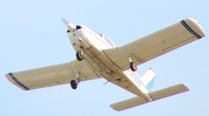 Another key Cherokee characteristic was the use of countless subtle techniques to reduce drag and weight, and economize on construction costs. The horizontal tail on most planes had typically been a combination of movable "elevator" surface attached to the trailing edge of a rigid horizontal stablizer (see the Cessna in background at left); on the Cherokee (in foreground at left) it was a simple, one-piece, all-moving "stabilator," mounted so as to provide the stabilizing influence of a rigid horizontal stabilizer, with the pitch control of a moveable elevator. It was smaller than conventional horizontal tails, and used a fraction of the parts that other tails required. The absence of a hinge joint (which on other planes joined the horizontal stabilizer and elevator) eliminated some drag, as did the smaller overall size of the stabilator. To save weight and cost, it had curved indentations -- called "beading" -- running from front to back, for stiffness without reinforcing internal parts.
Another key Cherokee characteristic was the use of countless subtle techniques to reduce drag and weight, and economize on construction costs. The horizontal tail on most planes had typically been a combination of movable "elevator" surface attached to the trailing edge of a rigid horizontal stablizer (see the Cessna in background at left); on the Cherokee (in foreground at left) it was a simple, one-piece, all-moving "stabilator," mounted so as to provide the stabilizing influence of a rigid horizontal stabilizer, with the pitch control of a moveable elevator. It was smaller than conventional horizontal tails, and used a fraction of the parts that other tails required. The absence of a hinge joint (which on other planes joined the horizontal stabilizer and elevator) eliminated some drag, as did the smaller overall size of the stabilator. To save weight and cost, it had curved indentations -- called "beading" -- running from front to back, for stiffness without reinforcing internal parts.
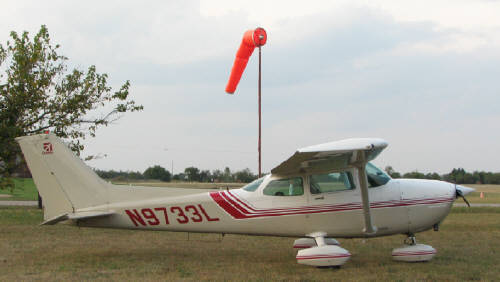 Still, the Cherokee 160 gave Piper a popular, cost-effective competitor to Cessna's super-popular 172/Skyhawk (left), which had been eating Piper's lunch since its debut in the late 1950's, when the Skyhawk stole the thunder from Piper's popular Tri-Pacer. The Cherokee 160 put Piper clearly back in competition with Cessna for the low-end, 4-seat lightplane market.
Still, the Cherokee 160 gave Piper a popular, cost-effective competitor to Cessna's super-popular 172/Skyhawk (left), which had been eating Piper's lunch since its debut in the late 1950's, when the Skyhawk stole the thunder from Piper's popular Tri-Pacer. The Cherokee 160 put Piper clearly back in competition with Cessna for the low-end, 4-seat lightplane market.
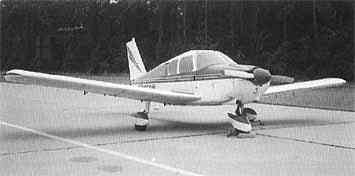 The smaller Cherokees were soon greeted by the birth of a bigger brother. Piper developed the 180-hp Cherokee 180 (right), with enough power to allow the pilot to safely fill both the fuel tanks and all four seats (even if the passengers weighed 200 pounds each), with room left over for optional instruments, radios and baggage. The roomy plane, powered by a hardy, reliable 180-horse Lycoming engine, quickly won over hundreds of buyers, and would attract thousands over the coming few decades.
The smaller Cherokees were soon greeted by the birth of a bigger brother. Piper developed the 180-hp Cherokee 180 (right), with enough power to allow the pilot to safely fill both the fuel tanks and all four seats (even if the passengers weighed 200 pounds each), with room left over for optional instruments, radios and baggage. The roomy plane, powered by a hardy, reliable 180-horse Lycoming engine, quickly won over hundreds of buyers, and would attract thousands over the coming few decades.
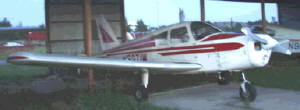 By stripping the back seats out of the Cherokee 150, and cutting other amenities, Piper produced the Cherokee 140, which became enormously popular as a starter airplane, and basic 2-seat trainer.
By stripping the back seats out of the Cherokee 150, and cutting other amenities, Piper produced the Cherokee 140, which became enormously popular as a starter airplane, and basic 2-seat trainer.
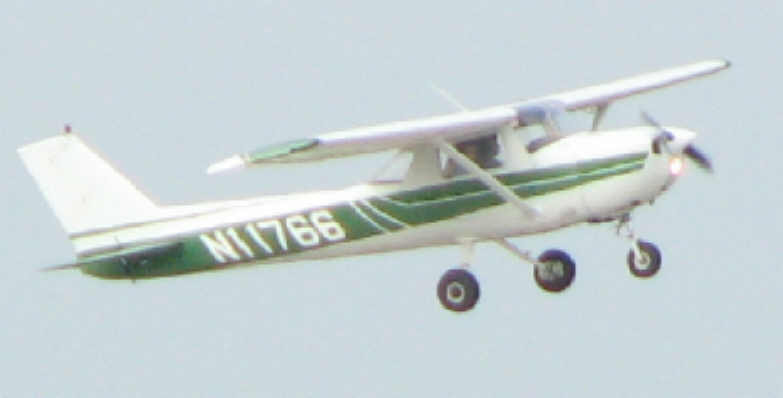
 Beech Musketeer (left), a fixed-gear Cherokee look-alike.
But the notoriously slow and expensive Musketeer -- though sturdy and comfortable -- was no match for the far more affordable, efficient and speedy Cherokees.
Beech Musketeer (left), a fixed-gear Cherokee look-alike.
But the notoriously slow and expensive Musketeer -- though sturdy and comfortable -- was no match for the far more affordable, efficient and speedy Cherokees.
 This Cherokee, too, was a 4-seater. Up to this point, all Cherokees (except the stripped-down 2-seat trainers) were 4-seat, fixed-gear airplanes.
This Cherokee, too, was a 4-seater. Up to this point, all Cherokees (except the stripped-down 2-seat trainers) were 4-seat, fixed-gear airplanes.
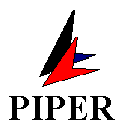 The Piper Cherokee line would do much to help the Piper Company catch-up to arch-rival Cessna Aircraft, though it would never quite be enough to put Piper back in the lead as the world's most prolific maker of light planes. Nevertheless, chiefly because of the popularity of the Cherokee, Piper would at least hold on to the #2 spot for most of the next two decades. In terms of the total number of airplanes built and sold, only Cessna would come close.
The Piper Cherokee line would do much to help the Piper Company catch-up to arch-rival Cessna Aircraft, though it would never quite be enough to put Piper back in the lead as the world's most prolific maker of light planes. Nevertheless, chiefly because of the popularity of the Cherokee, Piper would at least hold on to the #2 spot for most of the next two decades. In terms of the total number of airplanes built and sold, only Cessna would come close.
- Piper's sleek light twin
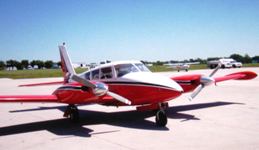 While the Piper Cherokee had proven a far more affordable and popular aircraft for most buyers, and had a respectable safety record, Piper's first all-metal single-engine plane -- its sleek, retractable-geared PA-24 Comanche -- still had additional value to bring to market.
The Comanche continued to sell through the 1960's, challenging the V-tailed Beech Bonanza and 210 Cessna Centurion. Taking the sleek Comanche a step further (as Beech had done with the Bonanza, ultimately creating the Baron), a twin-engined version of Piper's Comanche -- the PA-30 Twin Comanche -- was developed.
While the Piper Cherokee had proven a far more affordable and popular aircraft for most buyers, and had a respectable safety record, Piper's first all-metal single-engine plane -- its sleek, retractable-geared PA-24 Comanche -- still had additional value to bring to market.
The Comanche continued to sell through the 1960's, challenging the V-tailed Beech Bonanza and 210 Cessna Centurion. Taking the sleek Comanche a step further (as Beech had done with the Bonanza, ultimately creating the Baron), a twin-engined version of Piper's Comanche -- the PA-30 Twin Comanche -- was developed.
 The Twin Comanche suffered, however, from a nasty reputation born of its heavy early use as a training plane. During "engine-out" training and stall training, the Twin Comanche would too-often slip into a spin, and kill all aboard. This was a particular problem if the "critical engine" (the left side engine), failed -- leaving only the right engine to provide thrust.
The Twin Comanche suffered, however, from a nasty reputation born of its heavy early use as a training plane. During "engine-out" training and stall training, the Twin Comanche would too-often slip into a spin, and kill all aboard. This was a particular problem if the "critical engine" (the left side engine), failed -- leaving only the right engine to provide thrust.
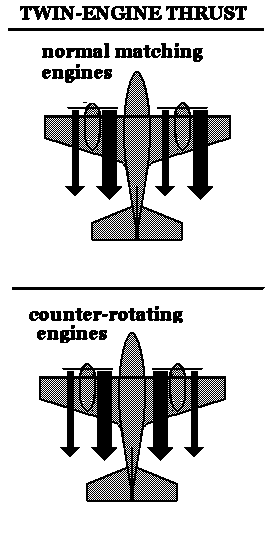 But (for a normal twin) if the "critical engine" (the left engine) fails, and the right engine is providing all the thrust, the thrust comes mostly from the right side of the right engine's prop arc -- far to the right of the airplane centerline -- creating a powerful tendency to yaw to the left (and roll over to the to the left, as well, if the airplane is flying slow, at nose-high angle of attack).
But (for a normal twin) if the "critical engine" (the left engine) fails, and the right engine is providing all the thrust, the thrust comes mostly from the right side of the right engine's prop arc -- far to the right of the airplane centerline -- creating a powerful tendency to yaw to the left (and roll over to the to the left, as well, if the airplane is flying slow, at nose-high angle of attack).

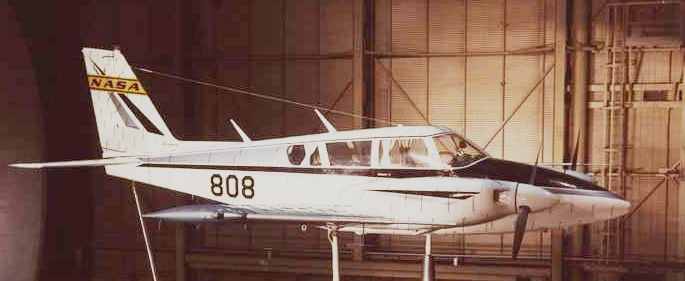
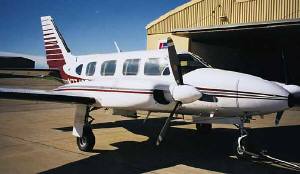
"Super" Cherokees --
 In 1967, Piper produced the speedy Cherokee Arrow. It was basically a Cherokee 180, but with retractable gear, and with the engine's bulky carburetor replaced by fuel injection (to allow more room for the retractable nosewheel) and a slightly smaller nosewheel. A later 200-hp version gave better performance. Briefly, Piper tried putting a "T-tail" on the Arrow, but it was soon discontinued (see A Tale of Two Tails, below).
In 1967, Piper produced the speedy Cherokee Arrow. It was basically a Cherokee 180, but with retractable gear, and with the engine's bulky carburetor replaced by fuel injection (to allow more room for the retractable nosewheel) and a slightly smaller nosewheel. A later 200-hp version gave better performance. Briefly, Piper tried putting a "T-tail" on the Arrow, but it was soon discontinued (see A Tale of Two Tails, below).

A Tale of Two Tails:
For a time, when business jets with T-shaped tails were considered impressive and sexy, Piper toyed with putting T-tails on some of its small planes. They theoretically would have less drag, being above the propwash. The Arrow (shown here) was among the Pipers picked for the T-tail treatment -- briefly.
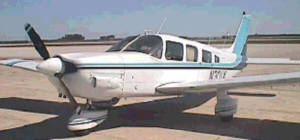 Appearing in 1965, the big Cherokee Six was a substantially-different airplane, though similar in appearance to the other Cherokees. It was much larger, with a wider, longer cabin, seating 6-7 people. Early versions used only 260-hp, but that soon proved inadequate, and a 300-hp model became the preferred version.
Appearing in 1965, the big Cherokee Six was a substantially-different airplane, though similar in appearance to the other Cherokees. It was much larger, with a wider, longer cabin, seating 6-7 people. Early versions used only 260-hp, but that soon proved inadequate, and a 300-hp model became the preferred version.
 In 1972, Piper tried making a twin-engined version of the Cherokee Six, called the Seneca. Sporting a pair of 180-hp engines (eventually 200-hp, then 220 hp), this "twin-Six" was an even stronger hauler than the Six -- and faster -- and became very popular as a cost-effective, basic, light, utility twin.
In 1972, Piper tried making a twin-engined version of the Cherokee Six, called the Seneca. Sporting a pair of 180-hp engines (eventually 200-hp, then 220 hp), this "twin-Six" was an even stronger hauler than the Six -- and faster -- and became very popular as a cost-effective, basic, light, utility twin.
 There was another twin in the works, too. The 4-seat Seminole was essentially a twin-engined version of the "T-tailed" Cherokee Arrow. Although a bit under-powered, it was faster than an Arrow, and very efficient for a light twin.
There was another twin in the works, too. The 4-seat Seminole was essentially a twin-engined version of the "T-tailed" Cherokee Arrow. Although a bit under-powered, it was faster than an Arrow, and very efficient for a light twin.
 During the 1970's, the wealth of the profitable Piper Aircraft Corporation had attracted sharks. To raise money for the expensive business of building airplanes, over a million shares of Piper Aircraft Co. stock had been put in circulation -- with only a fraction of the shares still held by the Piper family. In a hostile takeover attempt, the Piper family and traditional Piper management were targeted by a change of shareholders.
During the 1970's, the wealth of the profitable Piper Aircraft Corporation had attracted sharks. To raise money for the expensive business of building airplanes, over a million shares of Piper Aircraft Co. stock had been put in circulation -- with only a fraction of the shares still held by the Piper family. In a hostile takeover attempt, the Piper family and traditional Piper management were targeted by a change of shareholders.
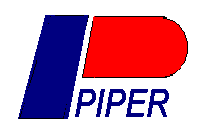 Chris-Craft, a conglomerate which made its fortune by building expensive boats and million-dollar yachts, announced its intention to buy controlling interest in Piper, and take over the company. Chris-Craft quickly corralled enough shares to get two of its people elected to the Piper Board of Directors (which was otherwise made up of Bill Piper and his sons, and their long-trusted employees Walter Jamoneau and Charlie Poole). Chris-Craft offered 30% above market value for Piper stock -- and quickly began accumulating more and more shares of Piper Aircraft.
Chris-Craft, a conglomerate which made its fortune by building expensive boats and million-dollar yachts, announced its intention to buy controlling interest in Piper, and take over the company. Chris-Craft quickly corralled enough shares to get two of its people elected to the Piper Board of Directors (which was otherwise made up of Bill Piper and his sons, and their long-trusted employees Walter Jamoneau and Charlie Poole). Chris-Craft offered 30% above market value for Piper stock -- and quickly began accumulating more and more shares of Piper Aircraft.

 Longer, thinner wings; New Cherokee names:
Longer, thinner wings; New Cherokee names:
became (with 160 hp) the PA-28-161 Warrior;
became the PA-28-181 Archer;
became the PA-28-201 Arrow
 Determined to break into the lightweight, low-powered, 2-seat trainer market aggressively, Piper did a massive survey of flight school operators to get an exact set of specification from them to design a training airplane. The result, first built in 1978, was Piper's new, little, 2-seat, low-winged Piper Tomahawk. It cost $10,000 less than the Warrior, and burned less fuel -- competing directly with the high-winged Cessna 150. With two doors (unlike the Cherokees, but like the Cessnas) the plane was easy for instructor and students to share. A bubble-like cockpit and T-tail distinguish this little 2-seat, side-by-side, low-wing trainer. It is simple and slow, but efficient, modern, and blessed with exceptional visibility.
Determined to break into the lightweight, low-powered, 2-seat trainer market aggressively, Piper did a massive survey of flight school operators to get an exact set of specification from them to design a training airplane. The result, first built in 1978, was Piper's new, little, 2-seat, low-winged Piper Tomahawk. It cost $10,000 less than the Warrior, and burned less fuel -- competing directly with the high-winged Cessna 150. With two doors (unlike the Cherokees, but like the Cessnas) the plane was easy for instructor and students to share. A bubble-like cockpit and T-tail distinguish this little 2-seat, side-by-side, low-wing trainer. It is simple and slow, but efficient, modern, and blessed with exceptional visibility.
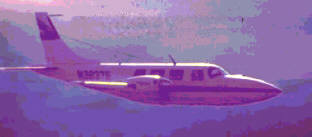 The Piper line was stretched by the addition of the Aerostar -- a super-sleek, super-fast, easy-handling, piston-engined, 6-seat twin. The Aerostar had been designed by Ted Smith, who was famous for the design of the respected Aero Commander twins. Originally, it was manufactured by a company bearing the designer's name. But in the late 1970's, Ted Smith Aircraft ran into financial trouble (great airplane designers are seldom successful businessmen),and Smith's prize design was put up for sale. Piper, who had lost their sleekest line -- the Comanches -- to the Lock Haven flood, saw a chance to get back some sex-appeal to their aircraft line, and bought the Aerostar (which far out-performed the lower-powered Twin Comanche). Sales of the expensive Aerostar never neared the volume of sales of the Comanche line, but their status (as admired, speedy aircraft) helped boost the credibility of Piper's overall lineup.
The Piper line was stretched by the addition of the Aerostar -- a super-sleek, super-fast, easy-handling, piston-engined, 6-seat twin. The Aerostar had been designed by Ted Smith, who was famous for the design of the respected Aero Commander twins. Originally, it was manufactured by a company bearing the designer's name. But in the late 1970's, Ted Smith Aircraft ran into financial trouble (great airplane designers are seldom successful businessmen),and Smith's prize design was put up for sale. Piper, who had lost their sleekest line -- the Comanches -- to the Lock Haven flood, saw a chance to get back some sex-appeal to their aircraft line, and bought the Aerostar (which far out-performed the lower-powered Twin Comanche). Sales of the expensive Aerostar never neared the volume of sales of the Comanche line, but their status (as admired, speedy aircraft) helped boost the credibility of Piper's overall lineup.
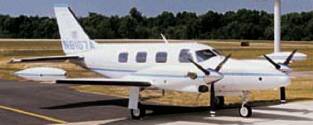 The next chapter in the Piper lineup was the growth of the Cheyenne line -- the pressurized, turboprop-powered version of the Navajo cabin-class twin. Born in 1972 as a modified Navajo-P, the Cheyenne -- powered by a pair of the popular Pratt & Whitney PT-6A turboprop engines -- was Piper's first turbine aircraft. The first Cheyenne had a bit too much power for its dinky tail, and the market seemed ripe for a low-cost turboprop. So Piper offered a low-powered version, calling it the Cheyenne I, and renaming the original Cheyenne the Cheyenne II. A stretched version, patterned somewhat on the Navajo Cheiftain (but pressurized) became the Cheyenne IIXL (for Extended Length, or simply Extra Long).
The next chapter in the Piper lineup was the growth of the Cheyenne line -- the pressurized, turboprop-powered version of the Navajo cabin-class twin. Born in 1972 as a modified Navajo-P, the Cheyenne -- powered by a pair of the popular Pratt & Whitney PT-6A turboprop engines -- was Piper's first turbine aircraft. The first Cheyenne had a bit too much power for its dinky tail, and the market seemed ripe for a low-cost turboprop. So Piper offered a low-powered version, calling it the Cheyenne I, and renaming the original Cheyenne the Cheyenne II. A stretched version, patterned somewhat on the Navajo Cheiftain (but pressurized) became the Cheyenne IIXL (for Extended Length, or simply Extra Long).
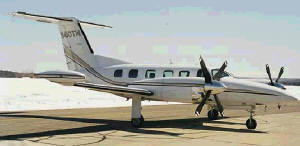 With more powerful engines, and a T-tail (to get the horizontal tail out of the harsh propwash of the bigger engines), the Cheyenne III was born. Finally, the Pratt&Whitney PT-6A turboprops, various versions of which had powered all the Cheyennes, was replaced with more powerful Garrett TPE-331 turboprops in a final, narrow, speedy version: the T-tailed Cheyenne 400LS -- capable of speeds up to 400 mph, making it the fastest civilian turboprop business twin in the world -- about as fast as some bizjets, though a bit more cramped, at a fraction of the costs of a comparable jet.
With more powerful engines, and a T-tail (to get the horizontal tail out of the harsh propwash of the bigger engines), the Cheyenne III was born. Finally, the Pratt&Whitney PT-6A turboprops, various versions of which had powered all the Cheyennes, was replaced with more powerful Garrett TPE-331 turboprops in a final, narrow, speedy version: the T-tailed Cheyenne 400LS -- capable of speeds up to 400 mph, making it the fastest civilian turboprop business twin in the world -- about as fast as some bizjets, though a bit more cramped, at a fraction of the costs of a comparable jet.
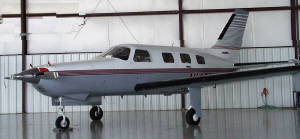
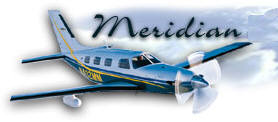 Finally, Piper offerd a version with a turboprop engine, yielding the Malibu Meridian, or simply the Meridian. Despite intense competition from foreign planes, including the Pilatus PC-12 and the Socata TBM-700, the Meridian has quickly become one of the fastest selling turboprop-powered planes in the world (essentially today's Piper M500 and farther-ranging 600-hp variant, the M600).
Finally, Piper offerd a version with a turboprop engine, yielding the Malibu Meridian, or simply the Meridian. Despite intense competition from foreign planes, including the Pilatus PC-12 and the Socata TBM-700, the Meridian has quickly become one of the fastest selling turboprop-powered planes in the world (essentially today's Piper M500 and farther-ranging 600-hp variant, the M600).
Piper has had a few noteworthy oddities in its basket. These include...
·
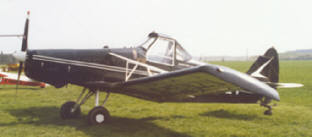 The Piper PA-25 Pawnee, a basic, low-wing cropduster, widely used, derived from the Super Cub (but with the strut-braced wing on the bottom of the plane, rather than the top). Based largely upon Fred Weick's research at Texas A&M University, the Pawnee was the first popular plane designed from the ground up as a cropduster (though it used many parts from the SuperCub and Tri-Pacer). It pioneered the raised, single-seat, "crash-cage"-enclosed cockpit that has become a hallmark of modern cropdusters.
The Piper PA-25 Pawnee, a basic, low-wing cropduster, widely used, derived from the Super Cub (but with the strut-braced wing on the bottom of the plane, rather than the top). Based largely upon Fred Weick's research at Texas A&M University, the Pawnee was the first popular plane designed from the ground up as a cropduster (though it used many parts from the SuperCub and Tri-Pacer). It pioneered the raised, single-seat, "crash-cage"-enclosed cockpit that has become a hallmark of modern cropdusters.
·
The Piper PA-36 Pawnee Brave, a powerful low-wing cropduster, widely used, partially derived from the Cherokee Six, it seems. The fuselage is the most obvious difference from the Six, with a crash cage and single-seat cockpit as on the Pawnee. It also uses a tailwheel, instead of the Six's nosewheel, for landing on rough fields.·
The Piper PA-29 Papoose, an early attempt to build a lightweight, inexpensive 2-seat trainer plane to compete with the Cessna 150, by using fiberglass and plastic. However it was created in the late 1950's/early 1960's, when the state of the art in such construction was still in its infancy. It looked much like the later Tomahawk, but used a tapered wing and a normal (low-mounted) horizontal tail, rather than the Tomahawk's T-tail. Although the Papoose actually flew by 1962, Piper had so many problems with the design that it had to abandon the project, and resorted, instead, to creating the Cherokee 140 -- a two-seat trainer version of the Piper Cherokee 150.·
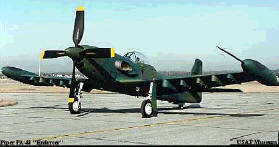 The Piper PA-48 Enforcer, a failed attempt to bring back the North American P-51 Mustang WWII fighter, as a ground-attack aircraft, with a turboprop engine (far cheaper to build than the P-51's elaborate-and-obsolete original Rolls-Royce Merlin piston engine), wingtip tanks and bomb-racks. Only two were built in the late 1960's / early-1970's, when the Vietnam war showed that old-fashioned, "low-and-slow" prop planes had value in jungle warfare. Unfortunately, the Mustang -- one of the fastest planes of World War II -- was never quite designed as a "low-and-slow" plane. This turboprop version was even "hotter" -- flying at jet speeds of over 500mph. Reviving the revered Mustang was an idea that had sex-appeal, but didn't go far in the military market.
The Piper PA-48 Enforcer, a failed attempt to bring back the North American P-51 Mustang WWII fighter, as a ground-attack aircraft, with a turboprop engine (far cheaper to build than the P-51's elaborate-and-obsolete original Rolls-Royce Merlin piston engine), wingtip tanks and bomb-racks. Only two were built in the late 1960's / early-1970's, when the Vietnam war showed that old-fashioned, "low-and-slow" prop planes had value in jungle warfare. Unfortunately, the Mustang -- one of the fastest planes of World War II -- was never quite designed as a "low-and-slow" plane. This turboprop version was even "hotter" -- flying at jet speeds of over 500mph. Reviving the revered Mustang was an idea that had sex-appeal, but didn't go far in the military market.
·
 The Piper PA-35 Pocono, an interrupted attempt to build a commuter airliner. To have been a huge leap ahead for Piper, it was a bold idea, for a company known for little planes. But the gamble had worked well for Cessna and (especially) Beech, whose executive planes -- when stretched -- made practical mini-airliners. The plan was for a 15-19 seat plane, seating three-abreast, and cruising about 200 miles per hour. It was not to be for Piper: management troubles, problems coming up with big enough piston engines (Piper wanted to avoid expensive turboprops), and finally the emergence of the competing Beech 99 Airliner combined to doom the project. The sole prototype was sold to a foreign buyer when the Piper family lost control of the company during a hostile takeover during the 1970's.
The Piper PA-35 Pocono, an interrupted attempt to build a commuter airliner. To have been a huge leap ahead for Piper, it was a bold idea, for a company known for little planes. But the gamble had worked well for Cessna and (especially) Beech, whose executive planes -- when stretched -- made practical mini-airliners. The plan was for a 15-19 seat plane, seating three-abreast, and cruising about 200 miles per hour. It was not to be for Piper: management troubles, problems coming up with big enough piston engines (Piper wanted to avoid expensive turboprops), and finally the emergence of the competing Beech 99 Airliner combined to doom the project. The sole prototype was sold to a foreign buyer when the Piper family lost control of the company during a hostile takeover during the 1970's.
·
The Piper PA-28R-300 Pillan (devil), a high-performance trainer built on the Cherokee frame, but with a two-seat tandem, bubble-canopy cockpit, built in Chile under license, as the T-35, for the Chilean air force.
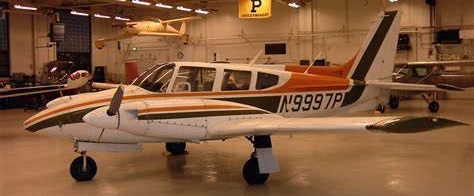 ·
·
·
The Piper PA-47-PiperJet/Altaire was Piper's failed attempt to enter the the jet market with a VLJ ("very light jet"), during the boom in such designs around 2005-2010. Intended as a competitor to the Eclipse 500 and Cessna Mustang, it was developed to seat up to 7, at 360 knots (414 mph), all the way up to 35,000 feet, at ranges up to 1500 miles (depending upon payload). A single Williams FJ-44-3AP engine line was to be mounted in the vertical tail. A roomier cabin was intended in the Altaire variant.But the single-engine jet (in both versions) faced FAA opposition to such high flight with only one engine -- and the comparably priced Cessna Mustang had two engines, and certification to fly over 40,000 feet. The program was cancelled.
Piper Today
Since the troubles of the early 1970's, Piper Aircraft has changed hands repeatedly, and gone in and out of business. But, because it is one of the three biggest names in light aircraft (along with Cessna and Beech), the market for the Piper line -- and the famous, trusted Piper name -- continues to be strong enough to regularly bring the company back to life.

Today, Piper Aircraft -- surviving through various bankruptcies and takeovers -- is known officially as "The New Piper Aircraft Corporation." Headquartered now in Vero Beach, Florida, New Piper continues to manufacture its most popular Cherokee-based planes (Archer, Dakota, Arrow, Saratoga, Saratoga SP and Seneca, along with the new Malibu/Mirage/Meridian line), and is still a major player in general aviation -- behind Wichita's Cessna and Raytheon (formerly Beech) aircraft companies.
~R.Harris, 2004.
 Return to
Return to
 Return to
Return to
Aviation Answer-Man
Gateway